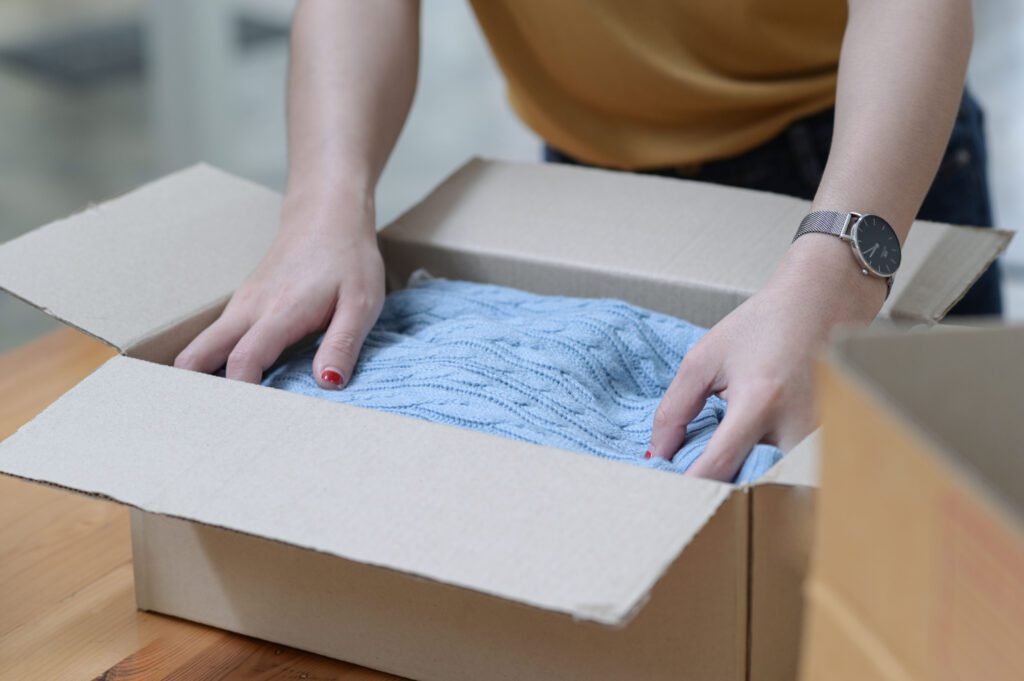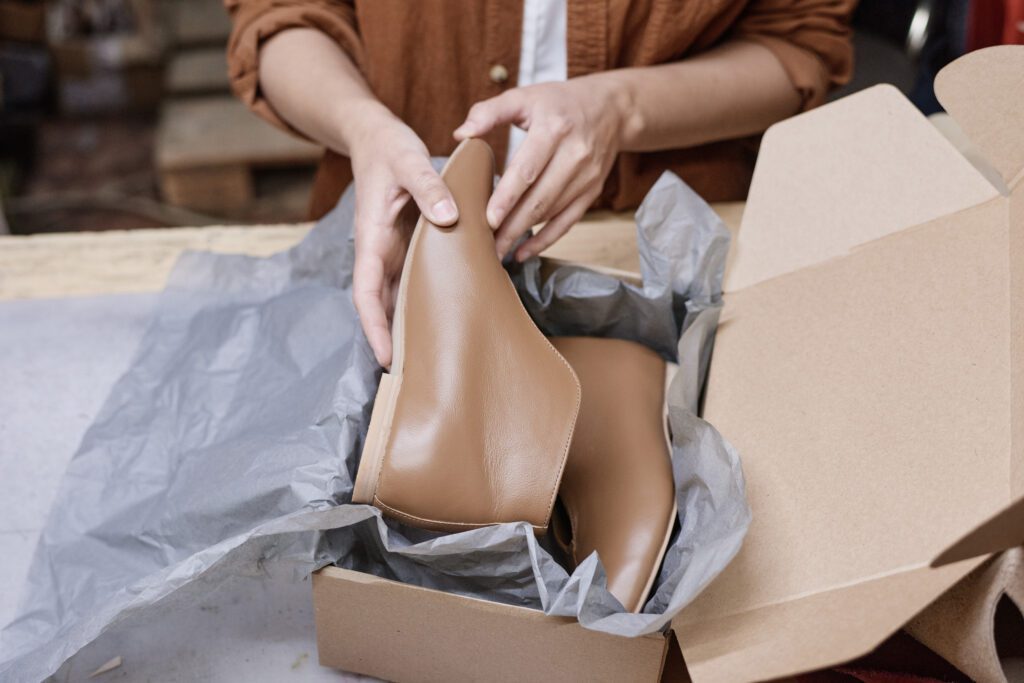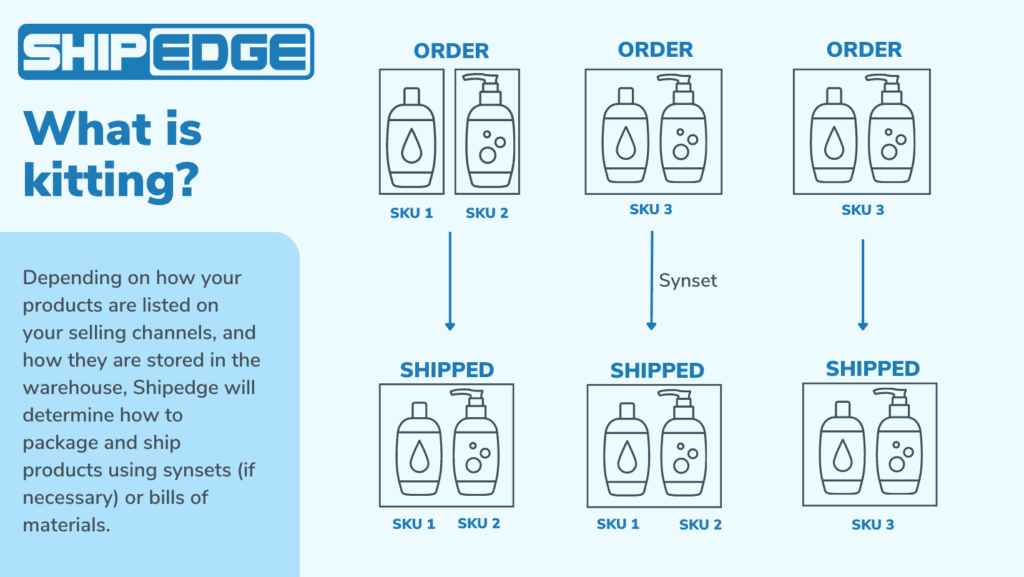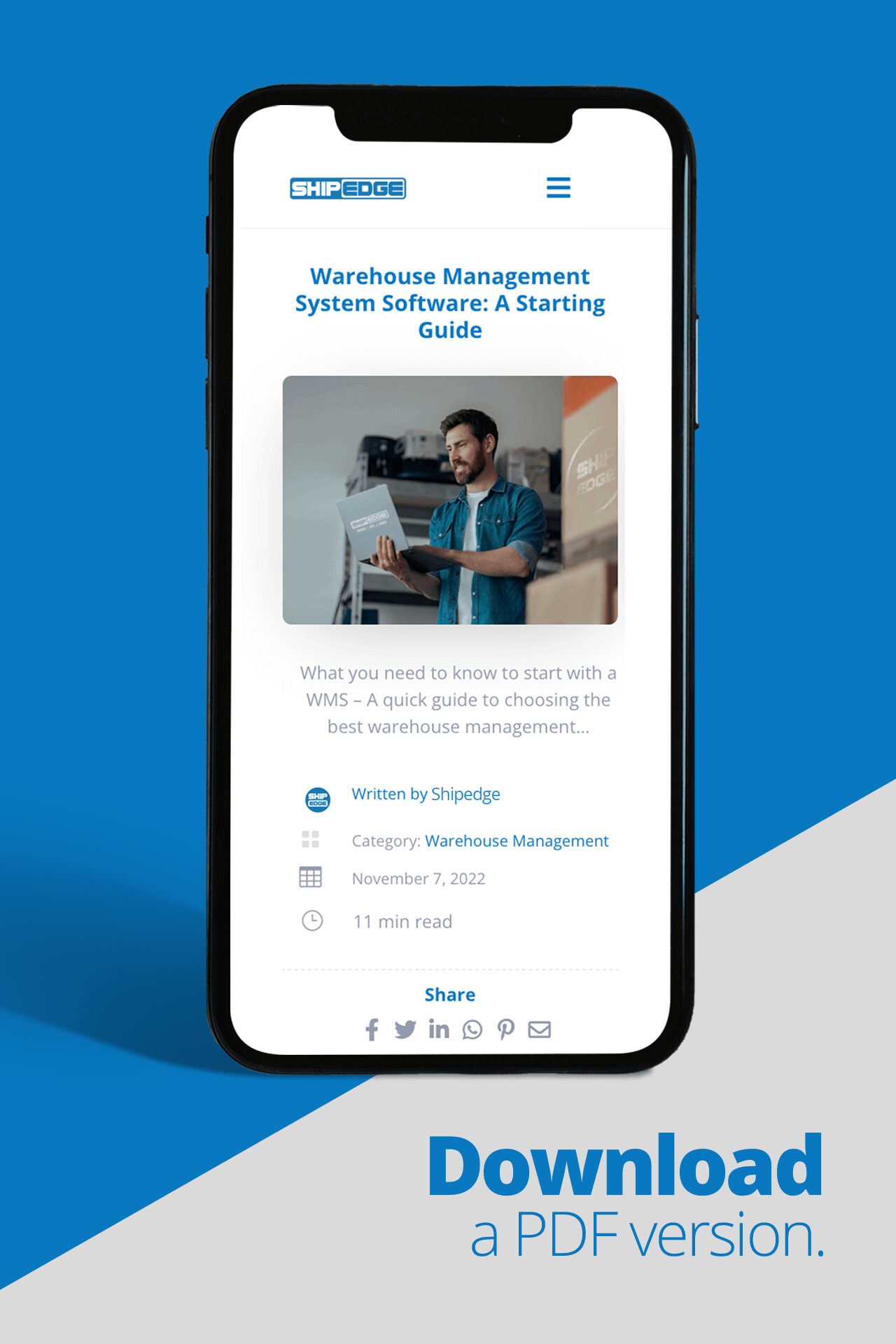In today’s eCommerce landscape, business efficiency and customer satisfaction are critical components that can make or break your success. As companies strive to enhance their value proposition while optimizing operations, they increasingly rely on inventive fulfillment strategies. A standout among these strategies is kitting. But what is kitting and what does it mean? How does it fit into the eCommerce framework? Let’s unravel the concept of kitting and understand its significance in the sphere of eCommerce.
What is Kitting?
Kitting is the process of grouping, packaging, and shipping individual items together as one unit. Kits may be called bundles, sets, or something else depending on your industry. However, selling “kits” of products is common in the general eCommerce area.
Kitting may happen in a couple of different ways. It could be as simple as bundling two complementary products together, such as a camera and its case, or as complex as assembling multiple components of a product into a ready-to-use item.
The concept of kitting is not new; it has been a part of manufacturing and retail for years. However, its application in eCommerce is a relatively recent development. In the realm of eCommerce, kitting is often used to create product bundles, gift sets, subscription boxes, or pre-assembled products that are ready to use right out of the box.

Kitting for eCommerce: A Strategic Approach
So, why should an eCommerce business consider kitting? There are several strategic advantages to kitting for eCommerce that make it an attractive option for businesses.
1. Efficiency in Order Fulfillment
One of the main advantages of kitting is increased efficiency in order fulfillment. When individual items are pre-packaged into kits, it saves time in the picking and packing process. Instead of locating and packing multiple items for an order, the fulfillment team only needs to pick and pack one item – the kit. This simplifies the order fulfillment process and reduces the chances of errors, leading to higher accuracy and faster shipping times.
2. Improved Inventory Management
Kitting can also simplify inventory management. By creating kits, warehouses can more easily track the movement and availability of products. It can also help manage overstocked items. By including these items in a kit, businesses can move the inventory faster, reducing the costs associated with holding excess stock.
Discover how our WMS can improve your business
3. Enhanced Customer Experience
Kitting can significantly enhance the customer experience. Customers appreciate the convenience of purchasing items that are already grouped together, especially if the items complement each other or create a complete experience. Pre-assembled products also offer instant gratification since they can be used immediately upon arrival.
4. Increased Sales and Revenue
Kitting can lead to higher sales and revenue. By offering kits, businesses can encourage customers to purchase more items at once. Additionally, kitting allows businesses to upsell and cross-sell products, leading to increased average order value.
In the next section, we will take a more detailed look at how kitting can be implemented effectively in an eCommerce setting, along with some real-life examples of successful kitting strategies.

Implementing Kitting for eCommerce Businesses
Now that we’ve explored the kitting meaning and its benefits, it’s important to understand how to effectively implement it in your eCommerce business. Here are a few steps to get you started:
1. Identify Suitable Products for Kitting
The first step is to identify which products are suitable for kitting. This could be products that are often purchased together, complementary products, or items that can be bundled to create a unique offering. Analyzing your sales data can provide insights into which items might be good candidates for kitting.
2. Determine the Type of Kit to Offer
Next, decide on the type of kit you want to offer. This could be a simple bundle of related products, a pre-assembled product, or a subscription box with a selection of items. The type of kit you choose will depend on your products, your target audience, and your business strategy.
3. Set Up Your Inventory Management System
Kitting requires careful inventory management. You’ll need to track not only the individual items SKUs but also the SKU of the kit. Make sure your inventory management system is set up to handle this. Some inventory management systems, like Shipedge, offer built-in support for kitting, which can simplify this process.
Discover how our WMS can improve your business
4. Train Your Fulfillment Team
Your fulfillment team will need to be trained on the kitting process. This includes picking and packing kits, managing inventory, and handling returns of kits.
5. Market Your Kits
Once your kits are ready, it’s time to market them. Highlight the benefits of the kits to your customers, such as the convenience, value, or unique experience they provide.

Use Cases of Successful Kitting Strategies
Now that we’ve answered the question, “What is kitting?” to illustrate the potential of kitting for eCommerce, let’s look at a few real-life examples:
- 1. Subscription Box Companies: Many subscription box companies use kitting to create a unique and personalized experience for their customers. For example, a beauty box company might create a kit with a selection of skincare products, while a meal kit company might bundle together all the ingredients needed for a particular recipe.
- 2. Electronics Retailers: Electronics retailers often use kitting to offer pre-assembled products or bundles. For instance, a retailer might sell a computer along with a mouse, keyboard, and monitor as a complete kit. This not only provides convenience to the customer but also increases the average order value for the retailer.
- 3. Fashion Brands: Fashion brands can use kitting to create outfits or collections. For example, a brand might offer a “summer essentials” kit that includes a swimsuit, a beach towel, and a pair of sunglasses.
Discover how our WMS can improve your business
How Does Kitting Work in Shipedge?
In Shipedge, kitting for eCommerce is handled in three different ways, depending on how your products are listed on your selling channel(s), and how they are stored in your warehouse.
For the examples below, assume you are selling shampoo and conditioner.

Sold in Eaches
The first way orders can come into Shipedge are when they’re sold as eaches. An each is a unit of measure for a single product. In this example, we have two eaches, SKU 1 and SKU 2, the shampoo and conditioner. They are listed as SKU 1 and SKU 2 on your selling channel, come into Shipedge as SKU 1 and SKU 2 and are sent together as SKU 1 and SKU 2.
Sold as a Kit on Selling Channel
Another way orders can come into Shipedge is when two SKUs are listed as a single product – SKU 3. In the warehouse, the two SKUs that make SKU 3 are stored separately and need to be picked and packed into the same parcel.
Shipedge has the ability to recognize that SKU 3 is made up of SKU 1 and SKU 2 through SynSets, which acts as a translator from the selling channel into the WMS.
Using Bill of Materials (BOM)
Finally, if SKU 3 is ordered on your selling platform and is stored in the warehouse as SKU 3, Shipedge will create a Bill of Materials (BOM) to let pickers know what should be in that product.
Regardless of how the kits or bundles are listed and stored, Shipedge has the capability to determine how to package and ship products using synsets (if necessary) or bills of materials.
If you’re interested in learning more about how Shipedge can manage your inventory, orders, and warehouse, contact a solutions engineer using the form below.
Discover how our WMS can improve your business














0 Comments